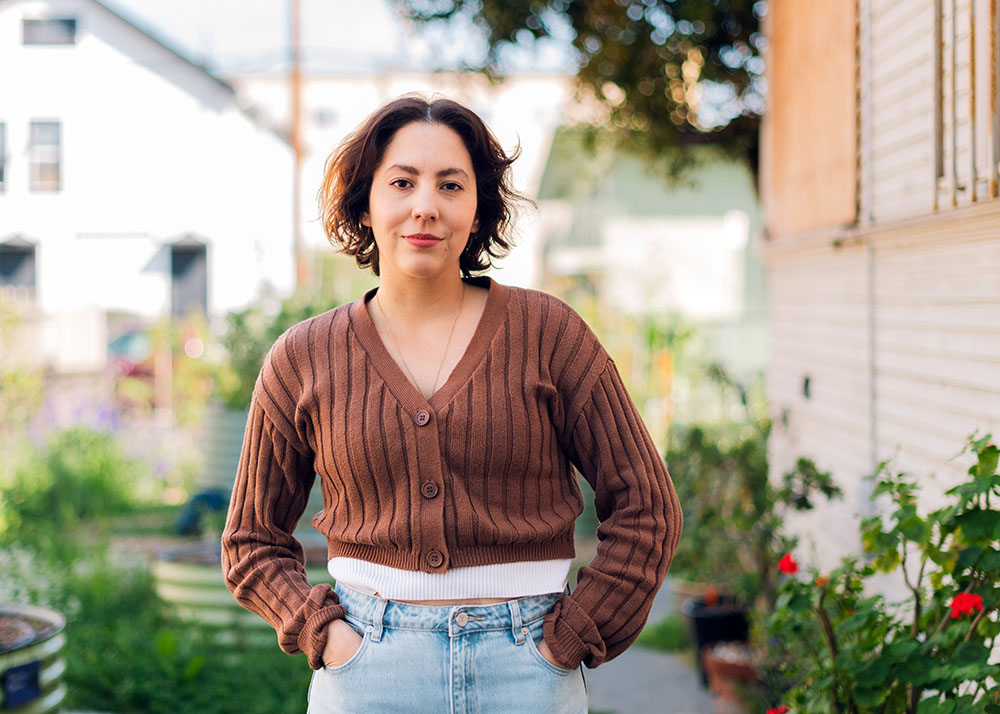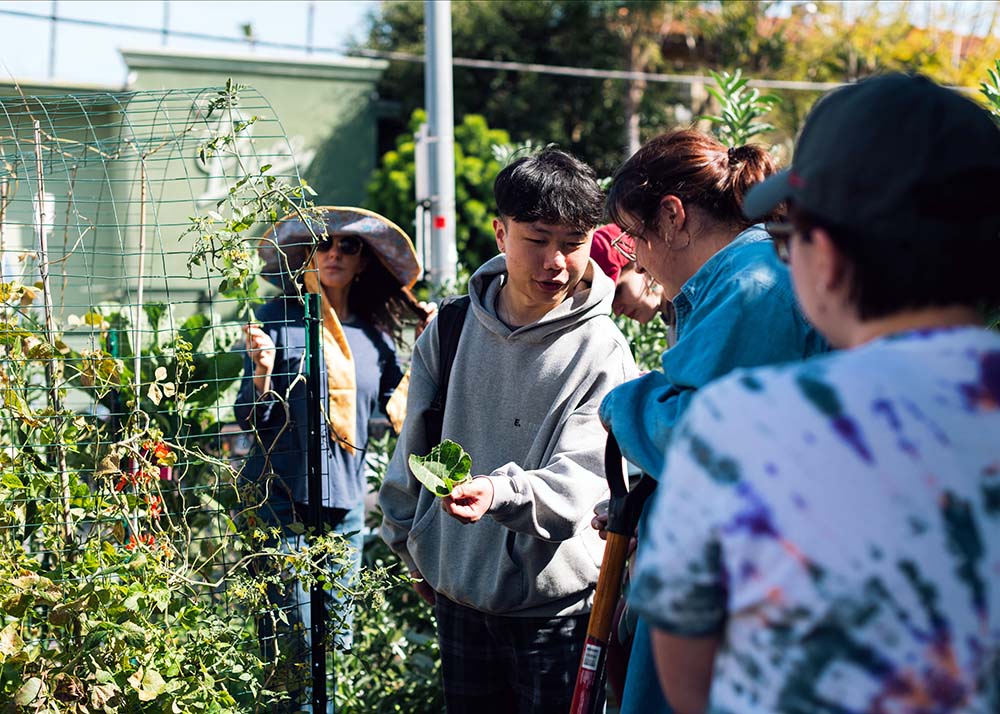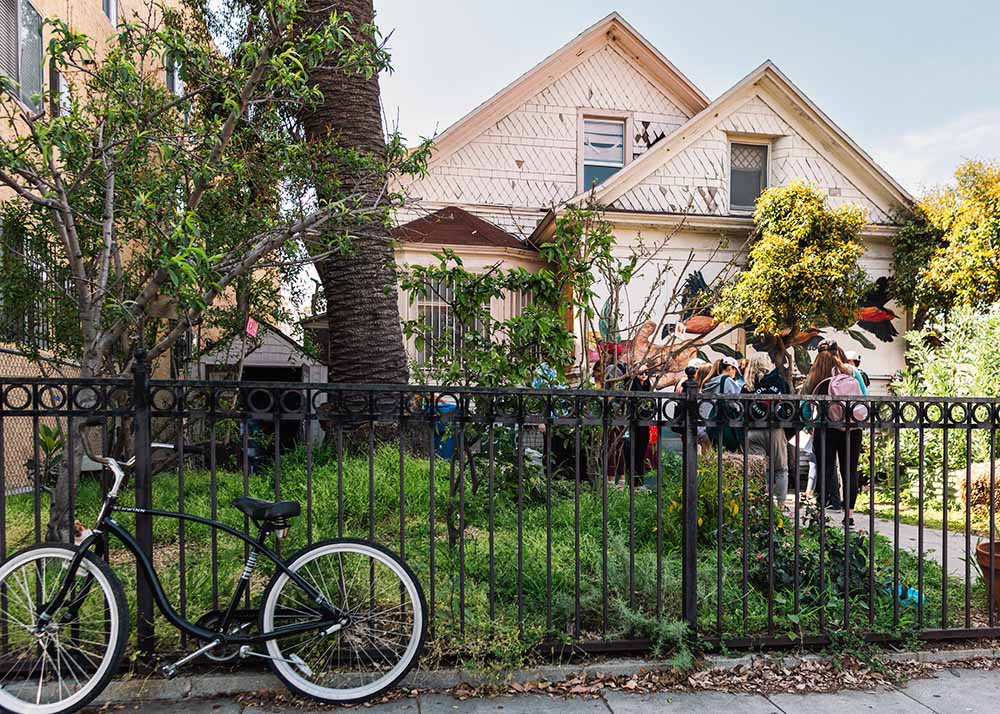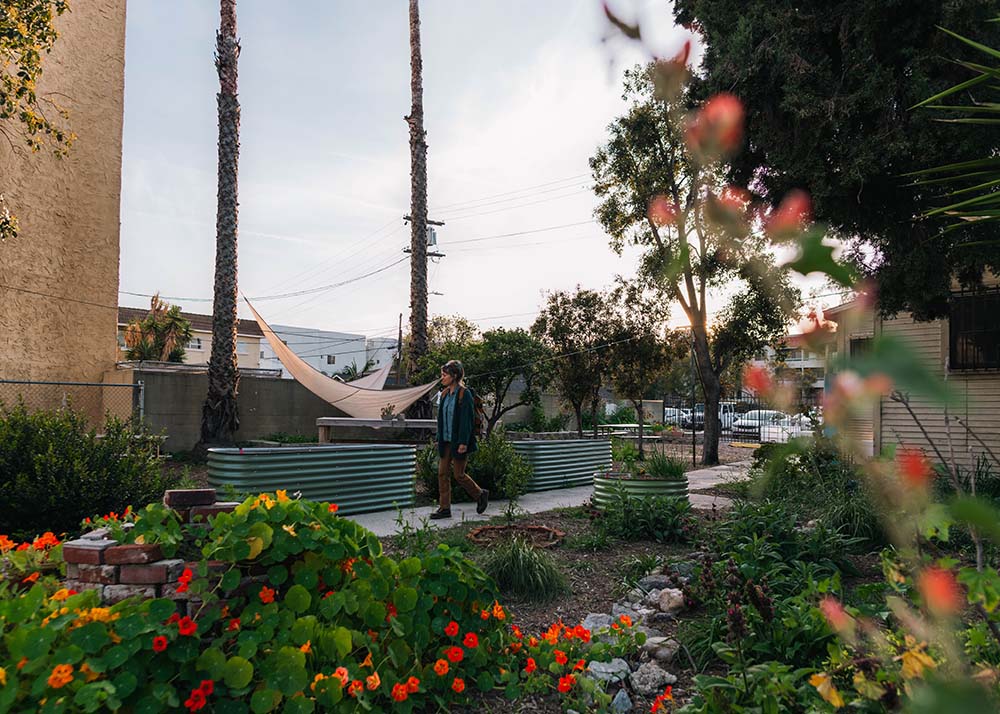Growing by design
April 21, 2023
When designing the USC Peace Garden, student landscape architect Daniela Velazco prioritized people and planting.
Community and Partners Events Health and Wellness Pandemic Students
By Mike McNulty
“A garden is a physical manifestation of people coming together, doing the work and enjoying themselves along the way,” says Daniela Velazco MLA+U/MHC ’23.
Velazco spent the better part of last summer designing the USC Peace Garden, a collaborative community project to rejuvenate what had been a long-neglected university-owned lot located one block north of the Shrine Auditorium.
As a student in the USC School of Architecture’s Master of Heritage Conservation/Master of Landscape Architecture + Urbanism three-year dual degree program, Velazco has engaged with a number of design projects ranging in scale from the hyper-local, like the USC Peace Garden, to the multi-layered regional. Her MHC thesis, for example, involves a historical documentation assessment of Santa Cruz Island.
In the past year working on the project, she has seen firsthand the garden realize its potential for bringing people together.
“A huge pile of mulch was delivered to the garden and I thought, ‘Oh my God, that’s going to take forever to spread around,’” Velazco laughs. “But six huge water polo players came over and did it in like 30 minutes!”
While the garden’s physical property is relatively contained, its community impact is sprawling. Equal parts laboratory, classroom, events space and wellness center, the Peace Garden is bringing together groups from across campus and the community to engage and grow together.
Accordingly, Velazco says her design approach had a responsibility first to understand what people wanted from the garden, and why.
“For a long time, landscape architecture had this attitude of, ‘We’re the experts, we’re in charge and you’re gonna love whatever we decide to build,’” Velazco says. “But now the profession is putting power back into people’s hands. So rather than the mindset of, ‘If we build it, they will come,’ the first agenda item is making yourself available to community groups, asking them what they want and going from there.”
A place to grow, a place to go
As a living classroom, students can study plant growth and foliage in the garden (Photo by Hannah Benet)
Restoration of the USC Peace Garden has been underway since early 2022, thanks to funding support from the USC Chan Division of Occupational Science and Occupational Therapy’s Responding to Society’s Post-pandemic Occupational Needs initiative. Camille Dieterle, associate clinical professor at the USC Chan Division, is coordinating the project.
“At the outset, I wanted the garden to highlight California native plants and urban agriculture because of their innate ties to sustainability and food justice, topics which I’ve been teaching in my Occupational Science minor classes for years,” Dieterle says. “As an occupational therapist, I also wanted a space that would be inclusive and accessible for as many people as people — children to older adults, people with physical disabilities and psychiatric diagnoses.”
To bring her vision to fruition, Dieterle knew the garden needed to undergo a structured landscape design process. USC’s Landscape Architecture program was the obvious place to go.
“I really want this project to be multidisciplinary — anybody and everybody at USC can get involved — so I turned to the people on campus in Landscape Architecture who think about this type of work all day long,” Dieterle says.
Last summer, Velazco and Dieterle walked the garden grounds together. They met with undergraduates on site. They gathered input from partners already on board, including the USC Office of Sustainability, the USC Garden Club and SoLa Community Peace Center.
“Stakeholders wanted a place where you can put your hands in the soil, a place to grow something and harvest it,” Velazco says. “Many also talked about wanting a contemplative space to calm down and experience the site in a more private way.”
That relationship between green spaces, occupations and health is one Dieterle especially appreciates. She is certified by the American Board of Lifestyle Medicine, a yoga instructor and, in her spare time at home, a highly enthusiastic hobby gardener herself.
With Dieterle’s perspectives, Velazco drafted a design distinguishing spaces in the garden that reflect their respective uses.
“For example, in the meadow area I was thinking about different topographic elements that would benefit people’s balance and kinesthetic skills as they move through it, or how flexible spaces could meet various needs that foster participation depending on who’s using it at any given time,” Velazco says.
Resilience of California native plant species
In less than one year, the garden has literally grown into its own. Much of that is because of the plants spec’d by the design.
“I really wanted to evoke California landscapes with our plant selections, which are based on heat and water needs,” Velazco says. “Plants like fragrant sages also have colorful blooms so the garden becomes this multisensory experience that truly transports you out of the surrounding city.”
The Peace Garden is part of Assignment: Earth, the university-wide sustainability framework championed by President Folt for a greener campus and planet. While the plant materials in the garden are a win for sustainability, Velazco is instead thinking about their impact in even bigger ways.
“When using native plants, I actually don’t say, ‘they’re sustainable;’ I say, ‘they’re resilient,’” Velazco says. “That’s because native plant choices not only save water in the long run, they also recreate an ecology that we’re otherwise running out of across L.A.”
That philosophy that also aligns with shifting attitudes across Southern California toward more water-wise, drought-tolerant landscaping choices. For example, groundskeepers on USC’s Facilities Management Services team are learning about and integrating more California native species across campus.
The project also recycles and reuses materials wherever and whenever possible. For example, when Velazco wanted to design a hardscape feature suggestive of a dry creek bed, Dieterle proposed creating the effect by reusing concrete blocks that were already on site.
Those types of intentional, daily choices made by people in the garden, whether at work, rest or play, will ensure the USC Peace Garden continues to evolve in the seasons and years ahead.
“You can have an idea in your head of how things are going to turn out,” Velazco says. “But when people engage with the garden, things change in ways that you wouldn’t have imagined — sometimes, even better than you imagined.”
⋯










